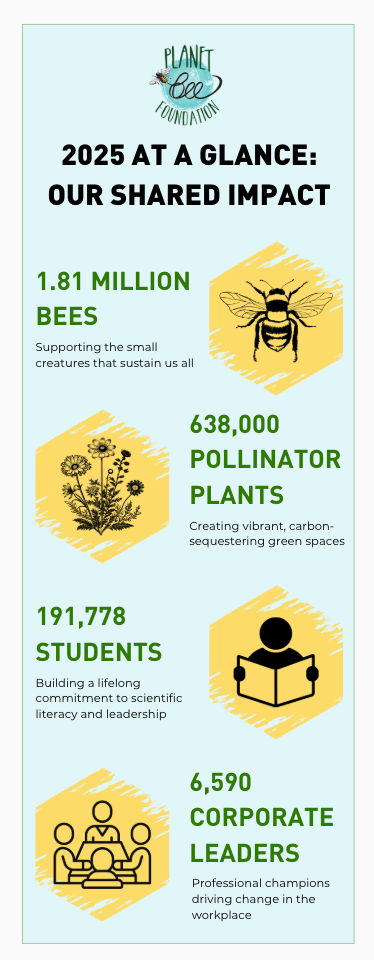Zero Emissions: How Bee Populations are Indicative of a Community's Air Health
- Planet Bee Foundation

- Sep 20, 2021
- 2 min read

The U.S. and numerous other countries in the world have committed to zero emissions by 2050. How does this relate to bee populations? Clean air benefits both humans and nature, and zero-emission policies are crucial for guaranteeing a healthy environment for the future.
Air pollution is commonly talked about when countries commit to environmental goals. Oftentimes, emissions—or pollution— from non-renewable resources in the atmosphere cannot be seen, so how do scientists know the air is polluted? Air pollution is measured by the Air Quality Index, or the AQI. This measurement is similar to a thermometer, but starts at zero and reaches 500. The higher the number, the more hazardous the air quality is. The AQI obtains information about the air with the help of satellite technology. This is the most common way to determine if the air in cities is unhealthy, but sometimes we can see the quality of the air with our naked eye. In December 1952, London, England experienced the Great Smog. When emissions react with the atmosphere, smog is sometimes formed, which is a severe type of pollution that reduces visibility. During this time, London was covered in a thick, gray blanket. Airports, trains, and roads had to be shut down for the population’s safety. This smog was caused by emissions from burning coal.
The Great Smog of London lasted for five days, but many types of air pollution last much longer. The AQI is a reliable tool to determine how much the air is polluted, but the satellite technology to find these values is not accessible to everyday citizens. Luckily, looking at the other organisms in our communities can tell us a lot about the air quality, including bees!

Bee populations are often indicative of a community’s air health. When the concentration of tropospheric ozone increases, bee populations decrease due to environmental stresses on their habitats. Tropospheric ozone is a component of smog that is formed from burning fossil fuels for cars, airplanes, factories, and more. Certain pollutants, like ozone, react intensely with nature. For example, the plants that attract bees to pollinate them lose the strength of their floral emissions, and they also decline in health. Thus, essential resources for bees are depleted in their habitats and pollination rates decrease.
Due to the bees needing a more suitable habitat for efficient foraging, they move to find a new area to establish their hive. The previous habitat’s bee populations will then decline, and this will impact the human services that rely on pollinators, like agriculture, and other bee dependents. This, among many ecological and environmental reasons, is why countries are coming together to reduce their emissions— with some countries aiming for zero emissions by 2050. To reduce personal emissions produced and help bee habitats, you can read our guide here. Communities can also reduce their carbon footprint by supporting public transportation, building community gardens, and practicing sustainable lifestyles!
************
Written by Paige Aldenberg & Clara Pitsker



